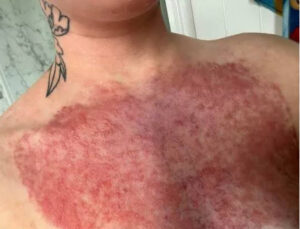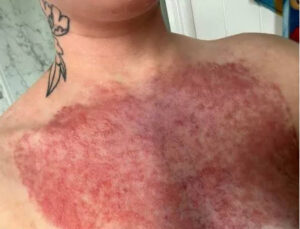

The Beauty Hack That Can Backfire: How Numbing Cream Could Ruin Your Skin—and Your Confidence
In the age of Instagram beauty and cosmetic enhancement, numbing creams have become the secret weapon in everything from lip fillers to microblading and even DIY waxing. The idea is simple: eliminate the pain, and walk out flawless.
But what if that little tube of cream is actually sabotaging your skin—and your results? Behind the instant relief hides a darker truth: numbing creams, when misused or misunderstood, can cause permanent discoloration, skin damage, or emotional distress that no filter can fix.
Here’s the side of the story few beauty professionals talk about.
💉 What’s in the Tube?
Most over-the-counter numbing creams contain lidocaine, a powerful anesthetic. In higher-strength formulas (used before tattooing, laser resurfacing, or dermal filler injections), it’s often combined with tetracaine or prilocaine for deeper numbness.
When used carefully and professionally, these ingredients can safely dull pain. But when misused—even slightly—they can lead to unexpected and sometimes irreversible consequences.
⚠️ Hidden Side Effects of Numbing Creams in Cosmetic Use
1.
Skin Discoloration
Prolonged or repeated use of numbing creams, especially with high concentrations, can lead to hypopigmentation or hyperpigmentation—light or dark patches that linger long after the procedure.
This is especially common in:
- Tattoo removal
- Chemical peels
- Laser hair removal
- Skin bleaching regimens gone wrong
For many people, the emotional toll of damaged facial skin or uneven tone can be more painful than the original procedure.
2.
Swelling and Puffiness
Ironically, numbing creams can cause temporary swelling, especially on sensitive areas like the lips or under the eyes. If applied too liberally before lip filler injections, it can distort the area and lead to uneven results, bruising, or even vascular occlusion (a blocked blood vessel—dangerous and painful).
3.
“False Confidence” During Procedures
Numbing creams can dull pain, but also dull your awareness. When getting tattooed or microneedled, some clients overestimate their tolerance, thinking the process is easy—until the numbing wears off halfway through.
This can result in:
- Half-finished sessions
- Panic during a procedure
- Unnecessary trauma to the skin
And worse? Some people push through the pain under numbing cream, unaware that their skin is being overworked, leading to scarring or poor healing.
4.
Emotional and Psychological Impact
After spending time and money on cosmetic work, discovering that your skin is blotchy, bruised, or damaged because of something you thought was “safe” can be devastating.
Clients have reported:
- Anxiety after botched results
- Regret and low self-esteem
- Depression related to permanent marks or damage
All from something as seemingly innocent as over-the-counter numbing cream.
🔍 So What Can You Do?
- Always follow the exact dosage instructions
- Avoid layering multiple numbing products
- Consult a licensed professional—especially for facial procedures
- Don’t use numbing cream on broken or inflamed skin
- Avoid using it daily or on large areas without medical advice
🧠 Final Thought: The Truth Beneath the Surface
In the pursuit of beauty, comfort is a luxury—but it should never come at the cost of your health or self-worth. Numbing creams may promise a pain-free journey, but for some, they deliver an aftermath of regret, discoloration, and emotional damage that lasts far longer than the sting they were meant to stop.
So next time you reach for that tube before a procedure, pause and ask yourself:
“Am I numbing the pain—or risking something far deeper?”
Leave a Reply